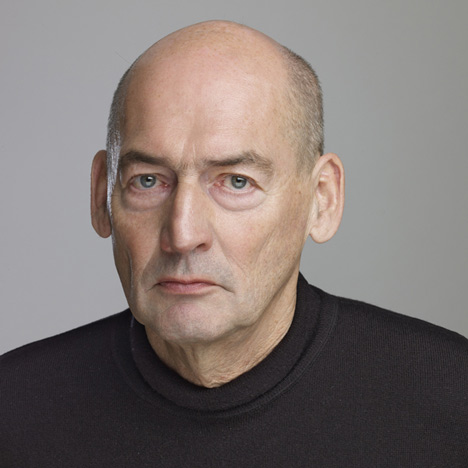Bjarke Ingels embodies "fully fledged new typology" in architecture says Rem Koolhaas
Danish architect Bjarke Ingels has been named as one of Time magazine's 100 most influential people of 2016, with a citation written by his former employer Rem Koolhaas that compares Ingels to a Silicon Valley entrepreneur.
"I do not consider Bjarke Ingels the reincarnation of this or that architect from the past," said Koolhaas in the text published alongside Ingel's listing in the Time 100. "On the contrary, he is the embodiment of a fully fledged new typology, which responds perfectly to the current zeitgeist."
Ingels, 41, is the founder of BIG – the firm behind the "courtscraper" Via 57 West apartment building in Manhattan and one of the companies working on the new Google campus in California.
"He threw out the ballast and soared," said Koolhaas, who is the founder of Dutch firm OMA. "He is completely in tune with the thinkers of Silicon Valley, who want to make the world a better place without the existential hand-wringing that previous generations felt was crucial to earn utopianist credibility."

Ingels worked for Koolhaas at OMA in Rotterdam from 1998 to 2000, and according to the Dutch architect the two have since become friends – despite sometimes competing for the same projects.
"We are friends," said Koolhaas of Ingels. "Once, during lunchtime, I used his office to prepare a competition presentation. (We lost.) On the menu that day was quiche. Wow, I wondered, so you can do great architecture without violating anyone's comfort zone?"
Time 100 is an annual ranking of the people the US magazine judges to be the most influential in the American world. Ingels is the only architect on this year's list. Koolhaas himself was included in the 2008 edition aged 63.

Ingel's Copenhagen-based firm BIG currently has a large number of major projects underway in the US, including the controversial overhaul of the Smithsonian campus in Washington DC, the new Washington Redskins American football stadium, and a pair of twisted towers in Miami.
BIG is also working on a new neighbourhood in Pittsburgh on the site of a former hockey stadium.
BIG's US office – housed in a skyscraper with views of the World Trade Center site where he has proposed a tower of stacked boxes – is now significantly bigger than OMA's with well over 100 members of staff.

Previous architects in the Time 100, who are usually listed in the Artists category, have included Frank Gehry in 2004, Renzo Piano in 2006, Rem Koolhaas in 2008, Elizabeth Diller and Ricardo Scofidio in 2009, and Wang Shu in 2013.
In 2010, the late Zaha Hadid – another ex-colleague and close friend of Koolhaas – was listed in the Thinkers category.
Ingels is arguably the most high-profile of a generation of young architects who worked at OMA at around the same time and have since gone up to set up successful studios of their own.
Others include Ole Scheeren, who led OMA's Asian office and is now based in Beijing; Joshua Prince Ramos, who left OMA New York to found REX; Fernando Romero, who is currently working on a huge airport project in Mexico with his firm FR-EE and Norman Foster; Jeanne Gang, who left in 1997 to found her Chicago-based firm Studio Gang; and Amale Andraos and Dan Wood, co-founders of WORKac in New York.
Ingels was announced as the designer of the 2016 Serpentine Gallery Pavilion in London – conceived as an "unzipped" walls of stacked blocks – earlier this year. In an opinion piece for Dezeen, critic Aaron Betsky said that Ingels and his team "make forms that reverberate successfully in a culture that is addicted to images manipulated to have instant and high impact."
"Nobody plays with form as well as Bjarke Ingels," he wrote. "It is the reason why he is the architect my students love more than any other designer working today."